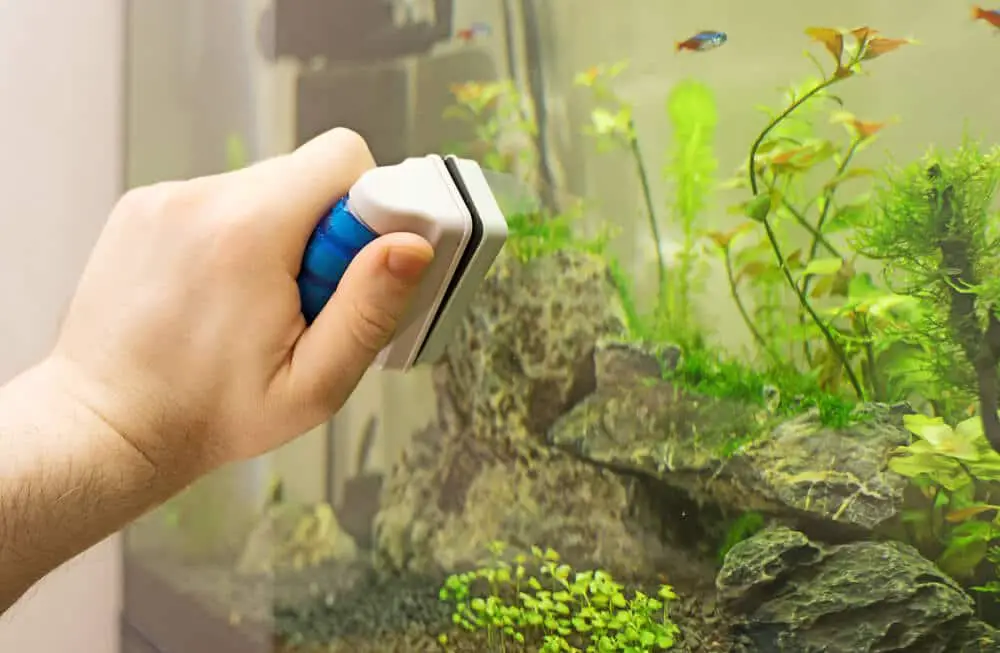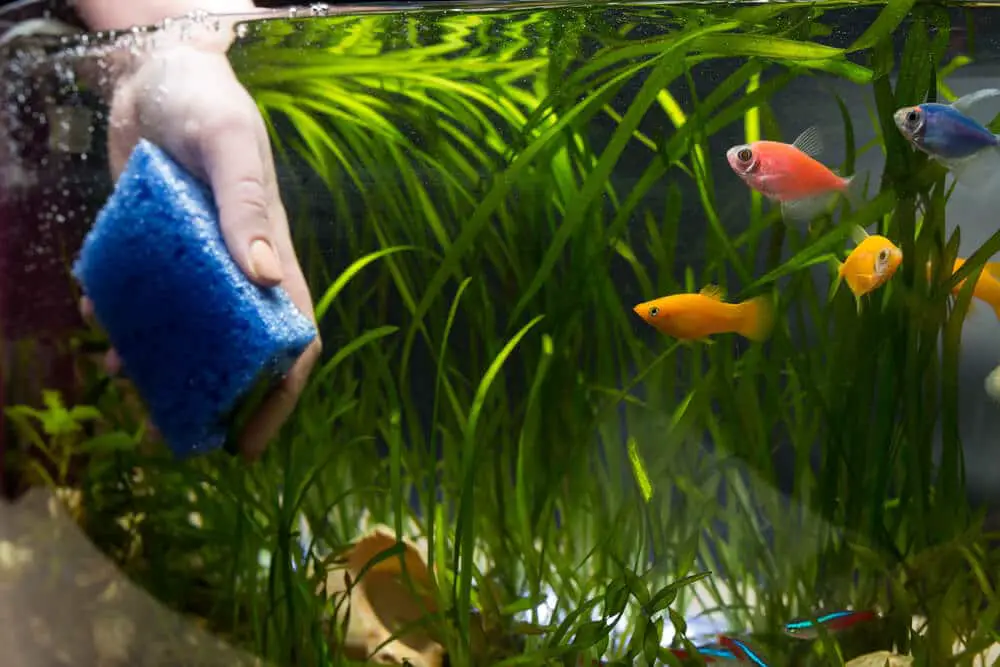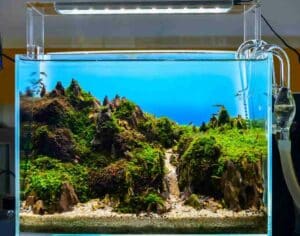Some algae are healthy in a fish tank, but algae in unnatural colors, such as purple, or in extreme quantities are worth monitoring.
Purple algae are rare, but if you do see them in your tank, they are often a sign that something else is off with your setup. Here is how to identify the causes of purple algae in a fish tank and get rid of unwanted blooms.
Why Are There Purple Algae in My Fish Tank?
Usually, algae that appear purple form due to poor water flow, unstable CO2 levels, and nutrient imbalances. However, the causes of purple algae blooms differ depending on the type of algae you are dealing with.
Identifying and eliminating the causes of purple algae requires more knowledge of the different algae out there. The rest of this guide can help you keep your tank in tip-top shape.
What Are Purple Algae? Overview

You will be surprised to find out that technically, there is nothing as purple algae. Algae come in natural colors such as brown, green, and red. However, tank lighting can sometimes make certain types of algae look purple. This is most common among red algae types that sometimes produce a red protein when photosynthesizing, causing it to look purple in certain lighting.
There are two types of algae that are the most common forms of purple algae:
- Black Beard Algae
- Blue-Green Algae
Black Beard Algae
Black beard algae are also known as Audouinella, black brush algae, or BBA for short.
This type of algae produces the red light protein mentioned above, which gives it a black or deep purple appearance in tank lighting.
You’ll be able to recognize black beard algae by their texture. BBA is soft to the touch yet slippery. They mostly grow on hard surfaces such as driftwood or slow-growing plants. One of the most likely culprits for introducing BBA into your tank is actually an infected plant.
The bad news is that once BBA appears in your tank, it tends to stick to surfaces very well. It rarely appears in freshwater tanks and is more common in saltwater tanks, but it does also show up in freshwater tanks. Fortunately, there are ways of getting rid of it.
Blue-Green Algae
Blue-green algae, or BGA, is actually a cyanobacterium, not algae, but they look like algae.
BGA comes in many colors, including blue, green, brown, and reddish-purple. You can identify it by touch as it has a distinctive, slimy texture and matted appearance. Its odor is very distinctive as well as it smells like soil.
You can also tell the difference between blue-green algae and black beard algae depending on where they grow in the tank. BGA tends to concentrate in parts of the aquarium glass and substrate that receive a lot of light.
Causes: Why Do Purple Algae Occur?
The answer to this question depends on which type of purple-appearing algae you are talking about.
Why Does BBA Occur?
The most common cause of BBA is a lack of CO2. These algae commonly form on plants, and if the tank plants don’t get enough CO2, they can’t compete with the algae for resources. A lot of tap water has inconsistent CO2 levels, which could cause BBA to develop during low periods.
Another common cause of BBA is improper water flow. If the water in the tank is too stagnant and doesn’t circulate, the algae will develop.
Why Does BGA Occur?
BGA is not technically algae but a cyanobacterium, which is a type of bacteria that feeds on nitrogen. If you’ve been overfeeding your fish and there is a lot of nitrogen-rich plant food floating around the tank, that can cause BGA to thrive.
Another common cause of BGA growth is too much lighting. Also, BGA thrives in areas with low water circulation, just like BBA.
Solution: How Do You Get Rid of Purple Algae in the Fish Tank?
The methods for getting rid of blue-green algae and black beard algae are actually different due to the different nature of these blooms.

Getting Rid of Blue-Green Algae
To get rid of blue-green algae, you need to eliminate the sources that help these algae thrive. Treatments that can kill off cyanobacteria growth are Excel and Maracyn.
One of the most effective way to get rid of all cyanobacteria in your tank is called the “Black Out Method,” which starves the blue-green algae of the light it needs to survive.
So to apply this method, first turn off all your aquarium lights for two to three days. Also to prevent any natural light source around the tank from decreasing the effectiveness of the method – you can cover your aquarium using a towel.
If you have successfully blocked the light during this period, the BGA should starve and die. Be careful, though, if you have live plants. Although aquarium plants can usually survive without light even up to three days, it’s essential to take necessary precaution.
Research about the specific aquarium plants you have in your aquarium and see if they can make it through these days of no light in your tank. And only proceed with the treatment if everything seems good.
After the black out treatment is completed, remove all the dead algae growth from the tank and clean the aquarium along with the filter. Change half of the tank’s water, and also clean the gravels and substrate.
Getting Rid of Black Beard Algae
The most effective way of getting rid of black beard algae is through physical scrubbing. Scrub the hard surfaces that have algae growths and prune aquatic plants with the algae.
How Do You Prevent Purple Algae?
Although blue-green algae and black beard algae are very different, the methods for preventing both growths are surprisingly similar.
- Both forms of algae thrive in stagnant water, so make sure you have good water flow.
- Make sure that you are not exposing your tank to too much light, which causes purple algae to grow.
- If your tank is prone to black beard algae, make sure that the CO2 levels of your water remain consistent by testing regularly.
- If your tank is prone to blue-green algae, make sure that you are not overfeeding your fish and clean up any excess dry food a few minutes after the fish eat, as the food feeds the bacteria growth.
Final Thoughts
Certain types of algae can appear red in freshwater tanks, such as black beard algae and blue-green algae. Both are pains to get rid of once they form, but easy enough to prevent through regular cleaning and tank maintenance.
Hi! I’m Praveen Ghoshal, the founder of eFishkeeping.com. Inspired by my Dad, I got interested in fishkeeping when I was a kid. Since then, I have been involved with this hobby. Currently, I have 3 fish tanks at our home, and I enjoy this hobby with my full family. Read more about me here.








